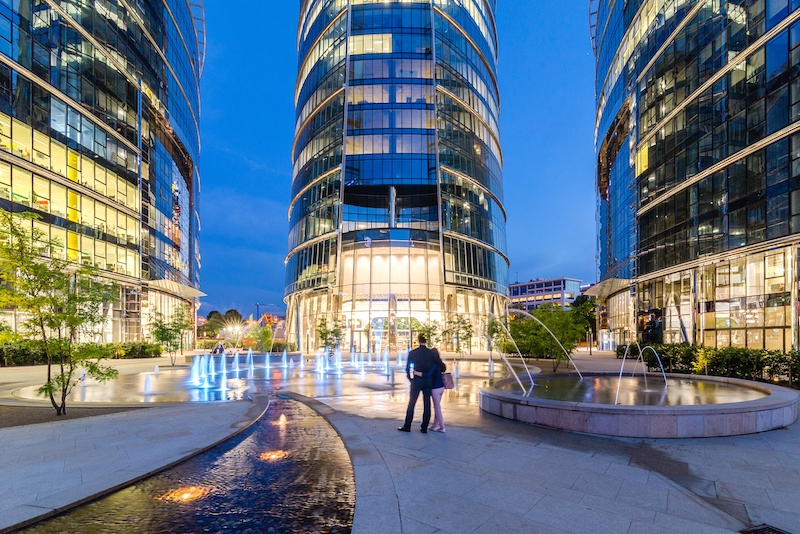We perceive a city as a place for people to live. Apart from being aesthetically pleasing, it should also combine many functions and meet the varied needs of its inhabitants. As a developer thinking holistically, we believe in our city-forming mission. That’s why we want our projects to cover all those diverse needs.
We want to create high-standard spaces for business that are valued by our tenants. At the same time, we have also to keep in mind the consistency of urban space and citizens-friendly role of our projects. We create functional spaces for business, but at the same time we want to give people a new quality of public space: useful, relaxing, supportive of the arts and engaging for local society — just as we did with Plac Europejski (European Square).
Warsaw Spire and Plac Europejski are an entirely new quality of urban structures in Poland. They were erected in the post-industrial part of Warsaw’s Wola district, which has been closed for decades. Ghelamco, Poland, implemented a project whose aim was to create a valuable urban space, which was open to the city’s residents. Contrary to most squares in Warsaw, Plac Europejski was designed with pedestrians in mind. It is the first square of this size in Poland’s capital that has been designed and completed by a developer on a plot of land which can be used by all the inhabitants of the city.
Plac Europejski has an area of 1.5 ha and is twice as big as Warsaw’s Plac Zamkowy (Castle Square), one of the city’s most recognised landmarks. 14,000 plants, including 160 trees, were planted on finely arranged granite floors. A stream of more than 120 metres, including fountains, runs through the entire square. It leads to the very foot of Warsaw Spire. On the north side of the square, Art Walk, i.e. an outdoor gallery was created, designed by world-class architect, Przemysław Mac Stopa. It enables employees of the complex, as well as Warsaw residents, to appreciate art at any given time of the day.
Regardless of the time of day and year, Plac Europejski serves as a cultural and artistic spot. In the summer, you can meet entire families here, lying on deck-chairs, with children splashing about in the fountains, as well as friends and tourists taking pictures against the tallest office building in Poland. In the winter, an ice rink and a fair with local delicacies are set up in the square. Every day, one can appreciate the works and installations of Polish artists and designers, whose exhibitions are changed a few times a year, in the outdoor Art Walk gallery.

The Warsaw Spire complex consists of three buildings — a 220 m high skyscraper and two 55 m buildings on the sides — is the largest and tallest modern office building in Poland and a landmark of the dynamically developing city of Warsaw.
Plac Europejski and Warsaw Spire have breathed a new life into the previously derelict and inaccessible parts of Warsaw’s post-industrial district. Now it is one of the most beautiful places in the capital of Poland, with its bold and modern architecture and its attractively designed public space.
_______________
The views expressed in this opinion editorial are the author’s own and do not necessarily reflect Emerging Europe’s editorial policy.






Add Comment